I’m beginning to sound like the cooking instructor, Phillis Carey, in my long-winded titles. But, you see, I don’t want you to flip on by this one without realizing what’s actually in this scrumptious soup. If simple comfort food is what you crave, this soup will fit the bill to a T.
We had invited friends over for dinner and they really like to eat light and healthy, so I said I’d make soup. So okay, what to make? I flipped through some of my tried and true recipes but finally decided to wing it – I’d create a new soup for the occasion. We try to limit the carbs we eat, so it was simple enough to put in just a bit of wild rice and a bit of barley instead of larger portions. If I’d done the normal, it would have made this a Wild Rice and Barley Soup with Mushrooms and Turkey Meatballs. No, I wanted the mushrooms to shine and the wild rice and barley to merely provide texture and some good healthy grains. It was perfect for a cold Sunday afternoon as I puttered in the kitchen, adding this and that.
The wild rice and barley were cooked separately because I didn’t want to overcook either of them. They take different cooking times, and I also wanted to add them in just at the last so they’d still have plenty of toothy bite to them. A variety of fresh mushrooms were used including some porcinis. Actually there were a LOT of mushrooms in this soup altogether, but that’s what I had in mind. I wanted it to seem like a real cream of mushroom, but without being loaded with cream itself (there’s just ½ cup in the whole recipe, so that’s one tablespoon per serving). Can I tell you, without sounding too proud of myself, that this is one heck of a good soup? I’m beginning to sound like a broken record since I’ve made some outstanding soups lately. Remember my story about my granddaughter Taylor asking me what was my favorite thing to cook? I was baking a cake at her house and am sure she was expecting me to say cookies or desserts. And then I burst her bubble and she definitely gave me a funny face when I said “soups.” So, here you are with a new soup that will make your comfort genes happy.
You can add other vegetables to this if you’d prefer – I just had in mind the mushrooms being the star and anything else was a subtle note. The meatballs were easy to make – just remember not to boil the soup once you drop them into the hot liquid because they won’t hold together. I added some egg substitute to the mixture to give it some “glue.” And I added some olive oil to give the meatballs a bit of flavor, and because the only cheese I had with me was cottage cheese, I added a few tablespoons of that too. By all means, put in some other kind of cheese – like feta or cheddar, or jack. Even Parmesan. At the dinner table I heard raves from everyone, so I think this is another winner. Hope you agree. Serve with a salad (and bread if you want it).
printer-friendly PDF
Mushroom Soup with Onions, Leeks & Turkey Meatballs
Recipe: A Carolyn T original
Servings: 8
NOTES: If you like more vegetable variety, add whatever other small or diced veggies you like to the soup when you add the mushrooms and cook until those veggies are nearly cooked before adding the meatballs. Suggestions: green beans, bell peppers (although they will change the flavor somewhat), fennel, parsnips (just a bit, though), white potatoes (but not much), cabbage, cauliflower (no broccoli, though), more celery, peas.
2 tablespoons olive oil
2 large yellow onions — diced
3 stalks celery — diced
2 large garlic cloves — minced
2 whole leeks — cleaned, chopped
3 small carrots — diced
2 quarts chicken broth
1 whole bay leaf
1 tablespoon celery seed
2 teaspoons thyme — fresh or dried
1/2 teaspoon red chili flakes
1/2 teaspoon cumin seed
1 1/2 pounds mushrooms — half sliced, half diced
1/3 cup wild rice
1/3 cup barley
1/2 cup heavy cream
1 cup water — or liquid from boiling wild rice and barley
MEATBALLS:
2 pounds ground turkey — breast meat
1/2 teaspoon salt
1/4 cup egg substitute, liquid
1/4 teaspoon fresh ground black pepper
1/3 cup cottage cheese — or crumbled feta
2 tablespoons extra virgin olive oil
2 tablespoons Italian parsley — minced, for garnish
Salt and pepper to taste
1. Heat olive oil in a large pot and add the onions and celery. Cook, stirring frequently, until onions have become translucent. Add the diced leeks and carrots, and continue cooking for about 10 more minutes. Add the garlic and continue cooking for about one minute only. Pour in chicken broth plus bay leaf, celery seed, thyme, red chile flakes and cumin seed. Bring to a boil and reduce flame to low and simmer for about one hour.
2. Allow soup to cool about an hour if you have time. This helps develop the flavors a bit. Remove half of the contents of the soup pot and using an immersion blender or food processor, puree the half contents and pour back into the pot.
3. In a small saucepan bring water to a boil for the wild rice, using the amount indicated on the jar or box, for the 1/3 cup. If you don’t want to have to monitor this constantly, add another half cup of water. Bring back to a boil and reduce heat. Simmer for about 30 minutes or longer until rice is just underdone. Pour contents into the soup pot, including the extra water, if any.
4. In the same pan as you prepared the wild rice do the same for the barley, also cooking it to an underdone texture (you can do both of these together, but the cooking times are different). Add the barley and any extra liquid to the soup pot.
5. Meanwhile, prepare all the mushrooms, chopping some in small mince and the remainder in slices (more texture). Add them to the soup pot and bring the soup back to a simmer and allow to very lightly boil until the mushrooms are cooked through (about 10 minutes). Add heavy cream and reduce heat to BELOW a simmer.
6. MEATBALLS: In a medium bowl combine the ground turkey, egg substitute, seasonings, oil and cottage cheese (or other cheese or your choice). Using your hands make small roundish shaped meatballs and very gently drop into the soup pot. Make sure the soup liquid does not boil or the meatballs will fall apart. Carefully push meatballs down through the soup so they’re all below the surface and continue heating at BELOW a simmer for 10 minutes. Serve 5 small meatballs into a soup bowl and scoop a cup or two of mushroom soup part in the bowl. Garnish with minced Italian parsley.
Per Serving: 443 Calories; 24g Fat (48.8% calories from fat); 31g Protein; 26g Carbohydrate; 5g Dietary Fiber; 111mg Cholesterol; 1083mg Sodium.





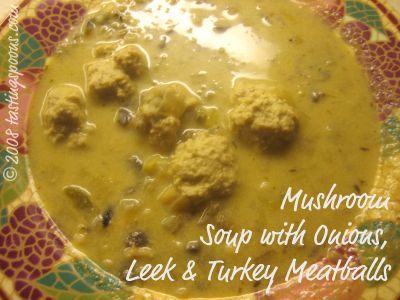

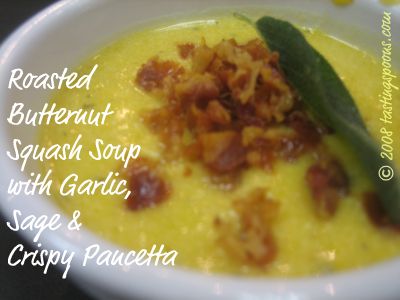


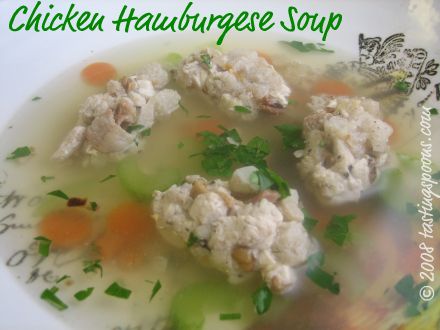
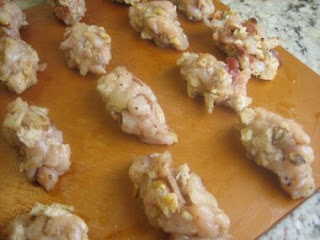

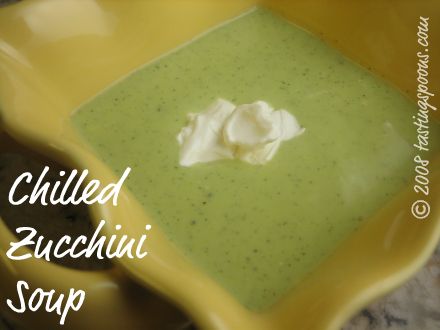
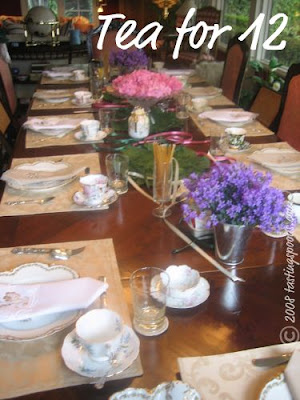

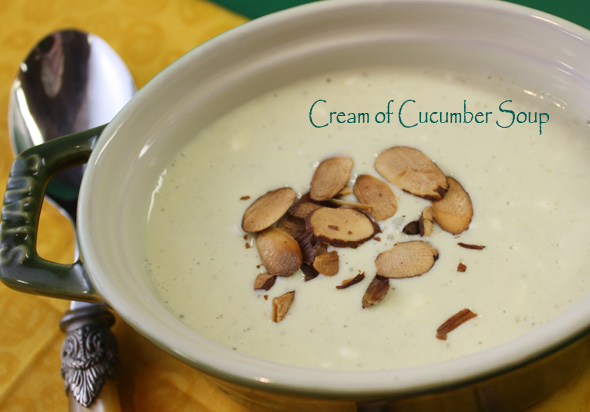

Leave a Comment!